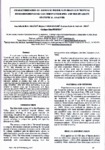Use este identificador para citar ou linkar para este item:
http://www.alice.cnptia.embrapa.br/alice/handle/doc/903560Registro completo de metadados
| Campo DC | Valor | Idioma |
|---|---|---|
| dc.contributor.author | ARAÚJO, A. J. de B. | pt_BR |
| dc.contributor.author | VANDERLINDE, R. | pt_BR |
| dc.contributor.author | LIMA, L. L. de A. | pt_BR |
| dc.contributor.author | PEREIRA, G. E. | pt_BR |
| dc.date.accessioned | 2015-10-10T03:45:58Z | - |
| dc.date.available | 2015-10-10T03:45:58Z | - |
| dc.date.created | 2011-10-20 | pt_BR |
| dc.date.issued | 2011 | pt_BR |
| dc.identifier.citation | In: INTERNATIONAL SYMPOSIUM OF THE GROUP OF INTERNATIONAL EXPERTS OF VITIVINICULTURAL SYSTEMS FOR COOPERATION, 17., 2011, Asti. Proceedings... Asti: Le Progrès Agricole et Viticole, 2011. | pt_BR |
| dc.identifier.uri | http://www.alice.cnptia.embrapa.br/alice/handle/doc/903560 | pt_BR |
| dc.description | Tropical wines have been produced in Thailand, India, Venezuela and mainly in Northeastem Brazil. In Brazil, this activity started twenty-five years ago and has been studied only in the last years. In this Brazilian Area, between 8_90 parallel of the South Hemisphere, it is possible to have two or three harvests per year due to the high temperatures (annual average temperature of 26 "C), high luminosity and use of irrigation. Analytical composition of grapes and wines can vary strongly according to harvest date into a year, (wines elaborated in the first or second semester). The aim of this work was to determine metabolic fingerprints of white and red wines from two vintages of 2009, according to their aromatic profile, using gas chromatographyand multivariate statistical analyses. Wines were elaborated by traditional methods, in stainless steel tanks of 200 L, by controlling fermentations temperature for red and white wines and using antioxidants. After stabilization and bottling, wines were analyzed in triplicate using gas chromatography with flame ionization detecto r (OC-FID). PCA multivariate statistical analysis was applied on aromatic compounds data to discriminate between wine type and month of winemaking, and different clustering were formed. White and red tropical wines presented different aromatic compound concentrations; higher alcohols were more efficient to separate wine samples than volatile esters. | pt_BR |
| dc.language.iso | eng | eng |
| dc.rights | openAccess | eng |
| dc.subject | Perfil aromático | pt_BR |
| dc.subject | Vinho tropical | pt_BR |
| dc.title | Characterization of aromatic profiles in brazilian tropical wines determined by gas chromatography and multivariate statistical analysis. | pt_BR |
| dc.type | Artigo em anais e proceedings | pt_BR |
| dc.date.updated | 2015-10-10T03:45:58Z | pt_BR |
| dc.subject.thesagro | Uva | pt_BR |
| dc.subject.thesagro | Cromatografia Gasosa | pt_BR |
| dc.subject.nalthesaurus | Grapes | pt_BR |
| dc.format.extent2 | p. 49-51. | pt_BR |
| riaa.ainfo.id | 903560 | pt_BR |
| riaa.ainfo.lastupdate | 2015-10-09 | pt_BR |
| dc.contributor.institution | ANA JULIA DE BRITO ARAÚJO; REGINA VANDERLINDE; LUCIANA LEITE DE ANDRADE LIMA; GIULIANO ELIAS PEREIRA, CNPUV / CPATSA. | pt_BR |
| Aparece nas coleções: | Artigo em anais de congresso (CPATSA)  | |
Arquivos associados a este item:
| Arquivo | Descrição | Tamanho | Formato | |
|---|---|---|---|---|
| 45765.pdf | 2,25 MB | Adobe PDF |  Visualizar/Abrir |









